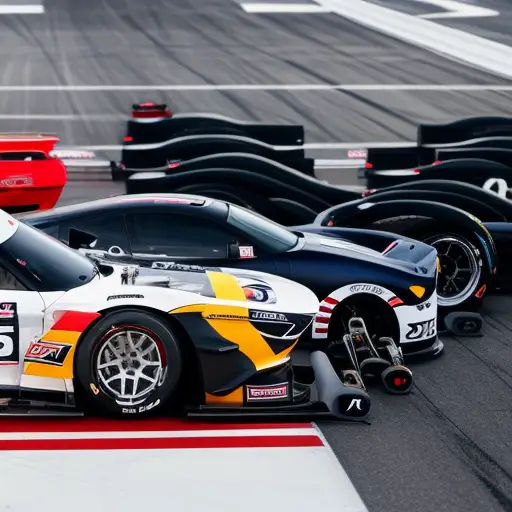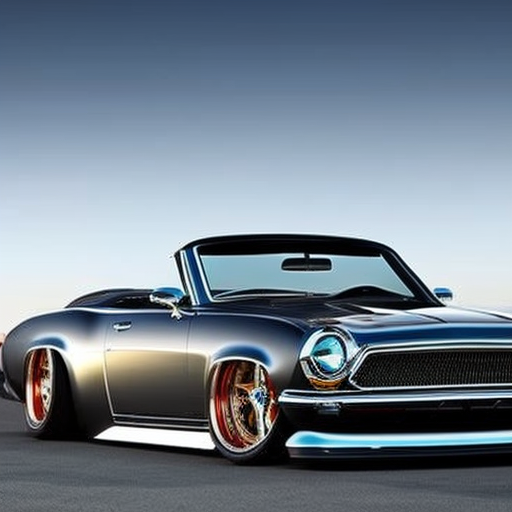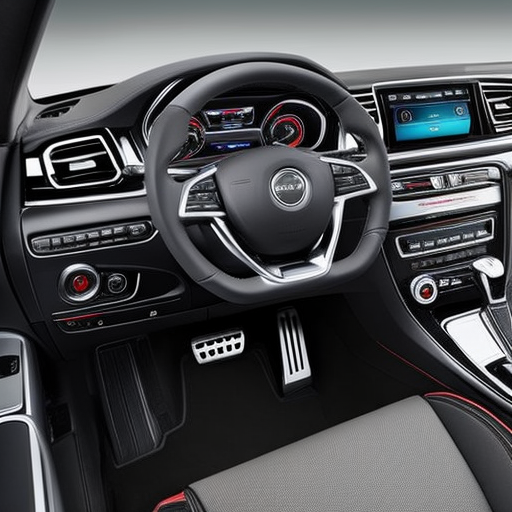How to Set Up a Track Day Car

Revving up for a day of high-speed thrills on the track requires more than just a sturdy car. From fine-tuning the engine to optimizing tire pressure, setting up a track day car demands precision and expertise.
This article breaks down the essential steps for enhancing performance and safety, covering everything from upgrading brakes to fine-tuning suspension.
Whether you’re a seasoned track enthusiast or a newcomer to the scene, mastering these crucial adjustments will elevate your driving experience to new heights.
Choosing the Right Performance Upgrades
When setting up a track day car, it is essential to select performance upgrades that enhance both speed and handling while ensuring reliability and safety. Aerodynamic modifications play a crucial role in improving the car’s performance on the track. Upgrades such as front splitters, rear wings, and diffusers help in managing airflow, reducing drag, and increasing downforce, resulting in improved high-speed stability and cornering grip.
In addition to aerodynamic enhancements, weight reduction strategies are equally important. This can be achieved by replacing heavy stock parts with lightweight alternatives, such as carbon fiber panels, titanium exhaust systems, and lightweight racing seats. Furthermore, removing non-essential components, such as air conditioning units and sound deadening materials, can significantly reduce the overall weight of the car, leading to improved acceleration, braking, and overall agility on the track.
It is important to note that while these modifications can substantially enhance the performance of a track day car, careful consideration must be given to ensure that these upgrades do not compromise the safety and reliability of the vehicle. Therefore, selecting high-quality, reliable components and working with experienced professionals is imperative in achieving the desired performance improvements while maintaining safety and dependability.
Optimizing Tire Selection and Pressure
To optimize the performance of a track day car, careful consideration of tire selection and pressure is crucial for achieving the desired levels of grip, handling, and overall performance.
Tire traction is a critical factor in determining a car’s performance on the track. When selecting tires, it’s important to consider the type of driving that will be done, the track surface, and the weather conditions. High-performance tires with a tread pattern designed for maximum grip are ideal for track use.
Additionally, understanding the optimal tire pressure for the specific tires being used is essential. Proper tire pressure is crucial for maximizing the contact patch between the tire and the track surface, which directly impacts traction and overall performance.
Temperature management is also a key consideration when it comes to tire performance. Monitoring tire temperatures and adjusting tire pressures accordingly can significantly affect grip levels and handling characteristics.
Adjusting Suspension for Track Performance
How can suspension be adjusted to optimize track performance in a track day car?
Suspension tuning is crucial for maximizing the handling and performance of a track day car. To enhance handling and ensure optimal tire contact with the track surface, several adjustments can be made.
Firstly, adjusting the ride height can lower the car’s center of gravity, reducing body roll and improving cornering stability.
Additionally, fine-tuning the damping settings of the shocks and struts can help control the car’s movements during aggressive driving, providing better grip and handling improvements.
Furthermore, adjusting the camber and toe angles can optimize tire contact patch and improve cornering performance.
Stiffening the suspension can also reduce body movement and weight transfer, enhancing the car’s responsiveness and overall performance on the track.
By carefully adjusting these suspension elements, track day enthusiasts can achieve significant handling improvements, allowing for better control and faster lap times.
Transitioning into the subsequent section about ‘upgrading braking system for enhanced performance’, ensuring optimal suspension settings is just one aspect of preparing a track day car for peak performance. Another critical aspect is upgrading the braking system to provide the necessary stopping power and control for aggressive track driving.
Upgrading Braking System for Enhanced Performance
Transitioning from optimizing the suspension, upgrading the braking system with high-performance components is essential for providing the necessary stopping power and control during aggressive track driving.
Upgraded brake pads are designed to withstand the high temperatures generated during intense braking, offering improved friction and heat dissipation compared to standard pads. This results in more consistent brake performance and reduced brake fade, crucial for prolonged track sessions.
High-performance brake rotors are another vital upgrade, engineered to withstand the heat generated from repeated high-speed braking. They are often constructed from advanced materials such as carbon-ceramic or directional vented iron, providing enhanced heat dissipation and durability. Additionally, high-performance rotors are designed to reduce unsprung weight, improving overall vehicle handling and responsiveness.
When upgrading the braking system, it’s important to consider a comprehensive approach that includes high-quality brake lines, fluid, and cooling ducts to ensure consistent and reliable brake performance under extreme track conditions.
These upgrades not only enhance safety but also contribute to improved lap times and overall driving experience.
Installing Safety Equipment and Harnesses
After upgrading the braking system for enhanced performance, the next crucial step is installing safety equipment and harnesses to ensure driver and passenger protection during high-speed track driving.
The first component to consider is the installation of a roll cage. A roll cage provides structural rigidity to the vehicle, protecting occupants in the event of a rollover or collision. It is essential to ensure that the roll cage is professionally installed and meets safety standards for the specific type of racing or track driving in which the car will be used.
In addition to the roll cage, upgrading seats to FIA-approved racing seats and installing harnesses are vital for safety. Racing seats are designed to provide better support and protection compared to standard seats, especially during high-speed cornering and sudden braking. Furthermore, harnesses, such as 4-point or 5-point harnesses, should be installed to securely restrain the driver and passenger in their seats, minimizing the risk of injury in the event of a crash or sudden deceleration.
Tuning Engine and Powertrain for Track Use
When preparing a car for track use, it is essential to consider engine performance upgrades and powertrain cooling modifications.
Engine enhancements such as intake and exhaust upgrades, turbocharging, or engine tuning can significantly improve power output and throttle response.
Ensuring the powertrain remains cool under extreme conditions is crucial for consistent performance and reliability on the track.
These modifications are key to optimizing the car’s performance and durability during high-intensity track driving.
Engine Performance Upgrades
To optimize a track day car for performance, there are several areas that can be focused on. One important aspect is the engine and powertrain. Tuning and upgrading these components can greatly enhance power output and overall driveability. Upgrading the fuel system is another crucial step. This can involve installing high-flow fuel injectors, a high-pressure fuel pump, and a performance fuel pressure regulator. These upgrades ensure a consistent and ample fuel supply to the engine, especially during high-demand track driving.
Another area to consider is the exhaust system. Fitting an aftermarket exhaust can have a significant impact on engine performance. By reducing back pressure and improving exhaust gas flow, an aftermarket exhaust can increase power and torque. It can also give the engine a more aggressive and sporty sound. In addition to these benefits, a well-designed aftermarket exhaust can contribute to weight reduction and improved heat dissipation, both of which are advantageous for track use.
Powertrain Cooling Modifications
A track day car’s engine and powertrain can be further optimized for performance by implementing powertrain cooling modifications. Airflow management is crucial for maintaining the powertrain’s temperature within the optimal range.
Upgrading the radiator can significantly enhance the cooling system’s efficiency, ensuring that the engine and powertrain remain at the ideal operating temperature even during intense track use. High-performance radiators with increased core size, improved fin design, and better coolant flow can effectively dissipate the heat generated by the powertrain, preventing overheating and maintaining consistent performance.
Additionally, radiator upgrades can facilitate better airflow management, allowing for improved heat exchange. By enhancing powertrain cooling through these modifications, track day cars can operate at peak performance levels while minimizing the risk of overheating issues.
Frequently Asked Questions
Can I Use My Regular Street Tires for a Track Day, or Do I Need to Invest in Track-Specific Tires?
Using regular street tires for a track day is feasible but not ideal. Track-specific tires offer better performance characteristics, including improved grip, heat management, and durability during high-speed maneuvers. Adjusting tire pressure is crucial for optimal performance.
What Safety Equipment Is Required for a Track Day Car, and Where Can I Purchase It?
For track day car safety, essential equipment includes a certified helmet, racing suit, gloves, and shoes. Look for reputable suppliers specializing in motorsport safety gear. Consider track-specific tires for optimal performance and safety.
Are There Any Specific Regulations or Guidelines I Need to Be Aware of When Setting up a Track Day Car?
What are the specific regulations and guidelines for setting up a track day car? Track day car regulations encompass safety, vehicle modifications, and noise limits. Adhering to these guidelines ensures a safe and enjoyable track experience for all participants.
How Can I Find a Reputable Mechanic or Shop to Help Me With Performance Upgrades and Tuning for Track Use?
When seeking performance upgrades and tuning for track use, it’s crucial to find reputable mechanics or shops with expertise in high-performance vehicles. Look for specialists with a track record of successful upgrades and a solid reputation in the racing community.
What Are Some Common Mistakes to Avoid When Setting up a Track Day Car for the First Time?
When setting up a track day car for the first time, avoiding common mistakes is crucial. Incorrect tire choice and inadequate suspension tuning can hinder performance upgrades. Are you prepared to optimize your vehicle’s potential?
Conclusion
In the journey of preparing a track day car, the path to success lies in carefully selecting the right upgrades. This includes optimizing tire selection and pressure, adjusting suspension, upgrading the braking system, installing safety equipment and harnesses, and tuning the engine and powertrain.
Just like a master craftsman meticulously shapes and hones a piece of raw material to create a masterpiece, so too must a track day car be meticulously prepared to achieve peak performance on the track.





